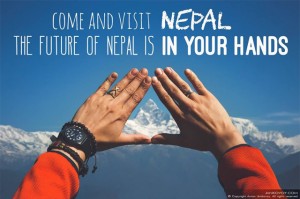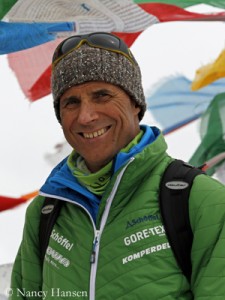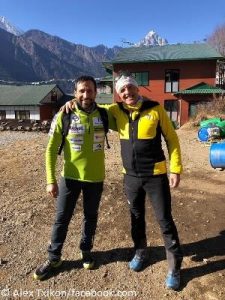Nepal now? Absolutely!
 The financial aftershock is probably unavoidable. But it is important to keep the vibrations for Nepal within limits. The fall trekking season is just around the corner, and the government anticipates a dramatic 50 percent slump in tourism. “The number of foreign tourists has declined after the earthquake”, says Tourism Minister Kripasur Sherpa. “This is a heavy burden, because tourism is very important for the Nepalese economy and people.” The Government points out that international independent earthquake experts have declared the most popular trekking routes in Nepal, the Annapurna Circuit and the Everest Base Camp Trek, for nonhazardous. “Tourists don’t take higher risks any more”, says Kripasur Sherpa. “Almost 80 percent of Nepal and most of the tourist destinations were not affected by the earthquake.”
The financial aftershock is probably unavoidable. But it is important to keep the vibrations for Nepal within limits. The fall trekking season is just around the corner, and the government anticipates a dramatic 50 percent slump in tourism. “The number of foreign tourists has declined after the earthquake”, says Tourism Minister Kripasur Sherpa. “This is a heavy burden, because tourism is very important for the Nepalese economy and people.” The Government points out that international independent earthquake experts have declared the most popular trekking routes in Nepal, the Annapurna Circuit and the Everest Base Camp Trek, for nonhazardous. “Tourists don’t take higher risks any more”, says Kripasur Sherpa. “Almost 80 percent of Nepal and most of the tourist destinations were not affected by the earthquake.”
Wrong impressions
The earthquake of 25 April and the numerous aftershocks have struck Nepal, which was already before the quake one of the poorest countries in the world, at the very heart. According to official figures, almost 9,000 people were killed, more than 22,000 were injured, more than 500,000 homes were destroyed, many of the roads and paths are still impassable. First the devastating earthquake drew the international attention to Nepal. But then happened what often happens after disasters: the effects of the earthquake disappears from the main headlines, therefore the public interest slows down, the wave of helpfulness and solidarity dies down. And impressions strengthen that often have little to do or even are at variance with reality.
Not just up to date
Many people seem to think that the whole of Nepal is down and will not stand up in the foreseeable future – and that we for this reason should give the country a wide berth. Travel warnings for Nepal issued by many Western governments for Nepal, which remained unchanged for an unreasonable period, played their part. By now, most warnings were repealed or reduced – but that does not necessarily mean that they are really up to date. So the German Foreign Office still advises against “not necessary traveling to the regions that were hardest hit by the earthquake” and mentions among others the “Solokhumbu (incl. Everest Base Camp and trekking routes in the Everest region)” and the Annapurna region. Notwithstanding that the independent earthquake experts from the US Agency Miyamoto International recently gave the green light for both areas.
I asked Ralf Dujmovits, the only German mountain climber who scaled all 14 eight-thousanders, about his opinion. The Nepalese government has appointed the 53-year-old, along with other top climbers, a “Tourism Goodwill Ambassador of Nepal”:
Ralf, if anyone asks you whether he should travel to Nepal this fall or not, do you advise him to go there?
Yes, absolutely! But not without ristriction. Based on the recent engineering reports for the trekking regions, I would express my recommendation a bit more differentiated. For example, trekking in the Khumbu or in Mustang is well feasible, trips in the Rolwaling area or on the Manaslu Curcuit are only possible to a limited extend. Trekking in Langtang should be postponed.
Most Western governments, including the German, have repealed or reduced their travel warnings for Nepal but still advise against traveling to some popular trekking areas. What do you think about this?
These still very undifferentiated or wrong descriptions of the situation should be adapted to the real current conditions as soon as possible. There are now reports of independent experts, who assess the areas, against which the Foreign Office warns, quite positive. The current travel warnings do damage to the already very troubled country without cause.
For this fall, the Nepalese government expects a 50 percent drop in tourism. What does this mean for the country?
Tourism is the foreign exchange earner and employer number one in Nepal. In addition to the lack of money to rebuild the country, the expected development in fall will lead to a massive slump of other important sources of income. I hope that as many people as possible will spend their holidays in Nepal.
P.S. Even at the risk that I might bug you: Please support our campaign “School up” to rebuild the school in Thulosirubari that was destroyed by the earthquake! You find the details on the right side of the blog.









